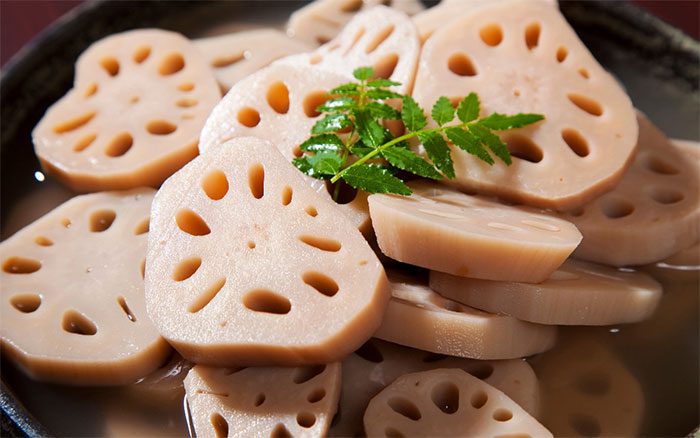Lotus root is a highly nutritious food with many health benefits. But do you know what makes lotus root so special?
What are the benefits of eating lotus root?


Lotus root can be prepared in many delicious, nutritious dishes.
The fact that lotus root grows in muddy water makes many people feel that it is unsafe and unclean. However, this misunderstanding has caused them to miss out on a superfood.
According to Indiatimes, while in Japan and other Eastern countries, lotus root is often prepared as a salad with various seasonings, people in India typically fry, cook it in curry, or even pickle it.
Reduces the risk of cardiovascular diseases
Lotus root is rich in nutrients such as vitamins and minerals, including vitamin B6, vitamin C, thiamine, pantothenic acid, zinc, potassium, phosphorus, copper, iron, and magnesium. Additionally, lotus root is low in calories, which can significantly reduce levels of bad cholesterol. This, in turn, may lower the risk of cardiovascular diseases. The presence of healthy fiber in lotus root helps improve digestion and reduce issues like constipation or aids in weight loss.
The potassium content in lotus root makes it an excellent “medicine” for reducing bad cholesterol levels in the blood. It helps prevent artery blockages. Moreover, the pyridoxine in lotus root helps control homocysteine levels in the blood, keeping the heart healthy.
Improves skin health
According to Healthifyme, lotus root has a high vitamin C content. Numerous studies show that this vitamin promotes skin health in various ways, thanks to its antioxidants.
Vitamin C boosts collagen production, protects the skin from the effects of free radicals and ultraviolet rays from sunlight. At the same time, it helps combat signs of aging. Additionally, vitamin C helps reduce symptoms of hyperpigmentation, such as dark spots and uneven skin tone.
The above are just 2 of the many health benefits of lotus root. Isn’t that enough to encourage you to add lotus root to your diet?
Lotus root can be prepared in many delicious dishes, such as frying, stir-frying, making soup, braising, or juicing.


















































